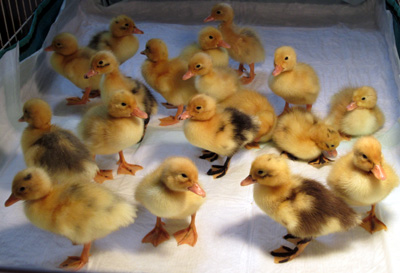 |
This photo
is 18 ducklings that were hatched from the ducks in the below photos. It
was taken by Nancy in Lake Orion, Michigan.
"18 out of the 20 fertile Ancona Duck eggs hatched. :) :) :) Here are their colors: 3 Black, 2 Chocolate, 3 Silver,
2 Lavender, 8 Blue. We are adding the ducklings we hatched from your eggs this year as our newest bloodline to our flock." -Nancy in Michigan
Ancona duck eggs take 28 days to hatch. Chickens take 21 days.
|
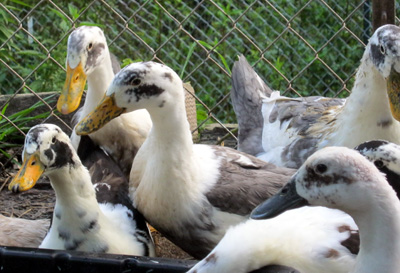 |
All of
the photos on this page are from the breeding stock for eggs you receive
in 2018.
This photo is a group of Anconas by their black plastic "pond".
|
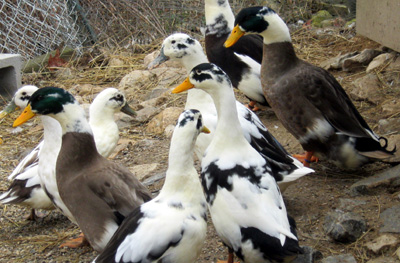
|
This group
includes some Black and White Anconas, and 2 Tri-Color drakes.
|
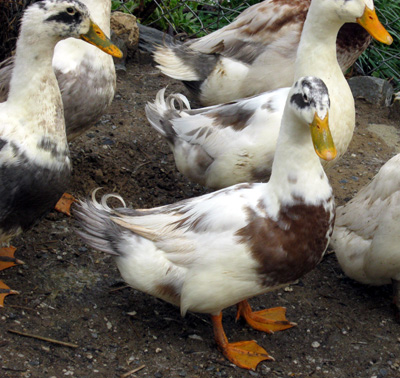
|
You can
see the curly tail of 2 males.
"The broken plumage pattern of Anconas is unique among ducks. Like Pinto horses and Holstein cattle, there is no set design. Any combination of white and color is acceptable as long as there are obvious broken areas on head, back, sides, and underbody. The neck is normally solid white." -Storey's Guide to Raising Ducks by Dave Holderread
|
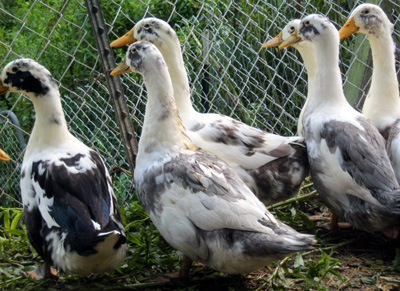 |
A group of Anconas: Black, Blue and Chocolate females.
"At sexual maturity the bill typically is spotted with varying amounts of green, often darkening to solid color with age. The legs and feet are orange with black or brown markings that increase with age." -Storey's Guide to Raising Ducks by Dave Holderread
|
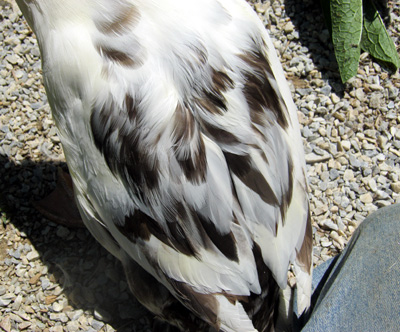 |
The tail
feathers of a Chocolate and White drake.
"This breed shares many physical characteristics with its apparent close relative, the Magpie. The main difference is the color pattern of their plumage, and Anconas are a little heavier, and their conformation is a bit stockier." -Storey's Guide to Raising Ducks by Dave Holderread
|
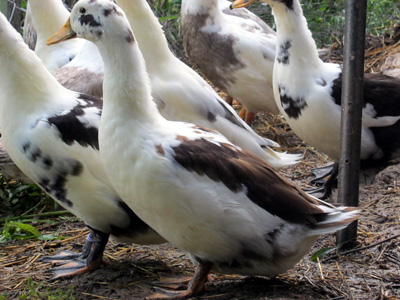
|
A Chocolate
and White Ancona female duck with friends.
"Anconas are the best foragers and the most prolific layers of the Medium-weight
breeds. Eggshell color can be white, tinted (cream), blue, green or spotted.
They have proven to be extremely hardy and adapt to many environments."
-Storey's Guide to Raising Ducks by Dave Holderread
|
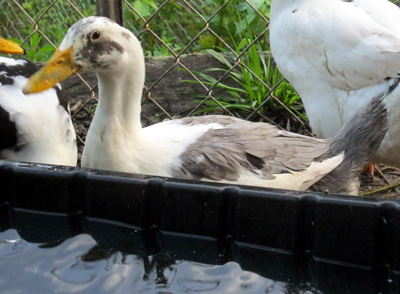 |
A Blue and
White Ancona female next to her pond. Blue is a gray-blue or a somewhat
dark gray.
|
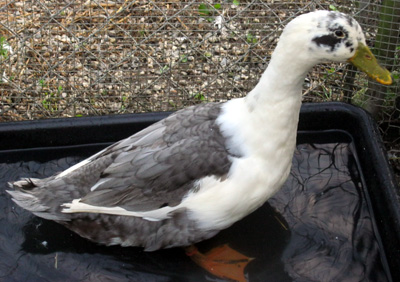 |
A Blue and
White Ancona drake. Anconas weigh from 5 to 7 pounds.
|
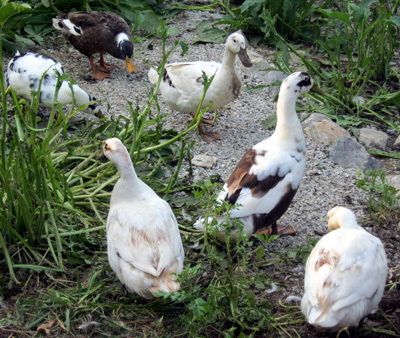 |
A group
of Ancona ducks in a well-eaten comfrey garden. In the upper left corner
is a TriColor female. In the front are 2 Lilac and White females.
|
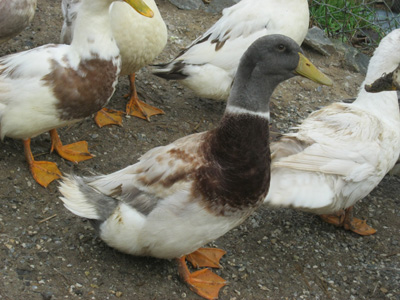 |
A group
of Ancona ducks with a Tri-color male.
|
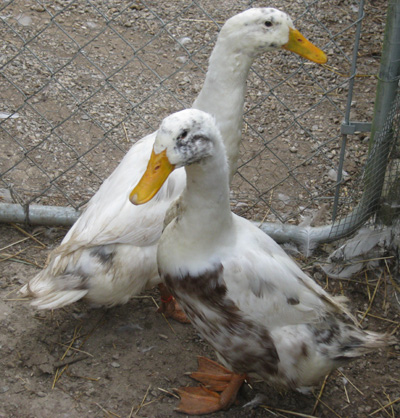 |
These are
Lilac and White ducks. Lilac is a light shade of lavender with a brown undertone.
It sometimes includes a few chocolate feathers.
|
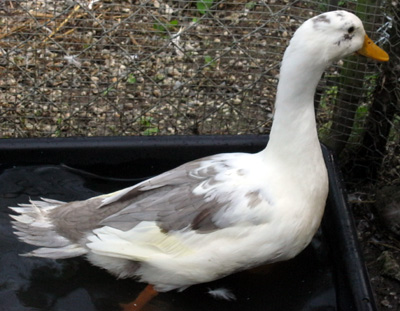 |
Lavender
and White Ancona drake. Lavender is a dark purple-gray or a medium gray. It has a brown undertone.
|
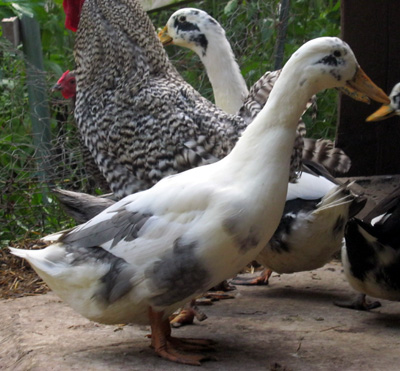
|
Lavender
and White Ancona hen next to a Dominique rooster.
|
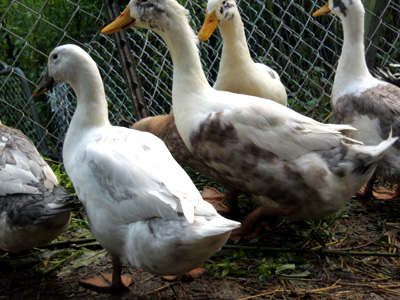
|
On the left
is a Silver and White Ancona hen. Silver is a very light gray. That color
is rare.
|
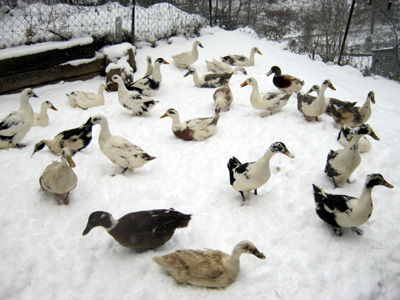 |
Almost all
of my Ancona ducks. This photo was taken in February.
Ducks love anything wet: water, rain, snow, mist, fog!
"The 11
ducks that hatched were awesome and hardy. Last summer they had multiplied
to about 50 (from 3 females)! My 3 sons were endlessly entertained and enraptured." -Dakota, Weippe, Idaho |














